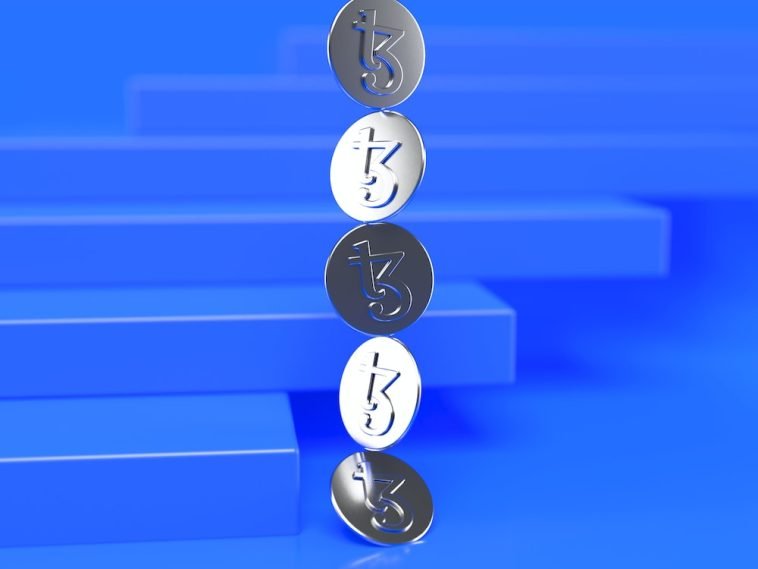Introduction.
The world of Non-Fungible Tokens (NFTs) has transformed the way artists and creators monetize their digital assets.
If you’re an artist, musician, or digital content creator, you may be intrigued by the idea of making your NFTs to sell and showcase your unique creations.
Creating and selling NFTs allows you to establish ownership and authenticity over your digital works while providing an opportunity to connect with a global audience of collectors and enthusiasts.
In this article, we will explore the step-by-step process of making an NFT to sell, from conceptualization to minting and listing on NFT marketplaces.
So, if you’re ready to dive into the exciting world of NFTs and turn your digital creations into valuable assets, let’s get started on how to make an NFT to sell.
How Do I Make an NFT To Sell?
By minting and selling NFTs, you can establish ownership and authenticity over your digital assets while tapping into a global market of collectors and enthusiasts.
If you’re ready to transform your digital creations into valuable assets and embark on the journey of selling NFTs, this step-by-step guide will walk you through the process.
So, let’s explore how to make an NFT and start monetizing your digital art, music, or any other form of creative work.
Step 1: Choose Your Blockchain Platform.
The first step in creating an NFT is to choose the blockchain platform you want to use. Ethereum is the most popular blockchain for NFTs, with platforms like OpenSea, Rarible, and SuperRare.
Alternatively, you can explore other blockchain platforms like Binance Smart Chain, Flow, or Tezos, which offer their own NFT marketplaces.
Research and compare different platforms based on factors like fees, community, and ease of use to determine the best fit for your needs.
Step 2: Set Up Your Digital Wallet.
To create and sell NFTs, you’ll need a digital wallet that supports the blockchain platform you’ve chosen.
Popular wallets for Ethereum-based NFTs include MetaMask and Trust Wallet, while Binance Chain Wallet and Bitski are common choices for Binance Smart Chain NFTs.
Set up your wallet, secure your private keys, and ensure you have enough funds to cover transaction fees and minting costs.
Step 3: Prepare Your Digital Art or Content.
Before minting your NFT, prepare your digital art or content. Ensure your work meets the platform’s specifications, such as file format, size, and resolution.
Create high-quality images, videos, music files, or other digital assets that accurately represent your creative work.
Step 4: Mint Your NFT.
With your wallet set up and your digital assets ready, it’s time to mint your NFT. The minting process involves creating a unique token on the blockchain that represents your digital asset.
Each NFT will have a specific set of metadata, including a title, description, and optionally, royalty settings.
Use the marketplace or platform of your choice to initiate the minting process and follow the provided instructions to input the required information.
Step 5: Set a Price and Royalties.
When minting your NFT, you’ll have the option to set a price for your creation. Consider factors like the uniqueness, quality, and demand for your digital asset to determine a fair price.
Additionally, you can set royalty fees, which entitle you to a percentage of future sales of your NFT. Royalties can ensure ongoing revenue from secondary sales of your NFTs.
Step 6: List Your NFT on a Marketplace.
After minting your NFT, it’s time to list it on a marketplace. Choose a reputable marketplace that aligns with your chosen blockchain platform and offers visibility to potential buyers.
OpenSea, Rarible, and SuperRare are popular choices for Ethereum-based NFTs, while BakerySwap and Mintable are examples of Binance Smart Chain NFT marketplaces.
Follow the platform’s listing process, provide accurate details, and upload high-quality visuals to showcase your NFT effectively.
Step 7: Promote Your NFT.
To increase the visibility and desirability of your NFT, actively promote it through various channels. Leverage social media platforms, art communities, and NFT-centric forums to share your work and engage with potential buyers.
Collaborate with influencers, participate in NFT-related events, and consider offering limited editions or exclusivity to attract attention to your NFT.
Step 8: Manage Sales and Interact with Collectors.
As your NFT gains traction and potential buyers express interest, it’s crucial to manage sales and interact with collectors professionally.
Respond to inquiries promptly, provide additional information if needed, and ensure a smooth transaction process.
Establishing a positive reputation and building relationships with collectors can lead to future sales and increased value for your NFTs.
Step 9: Stay Engaged with the NFT Community.
To thrive in the NFT space, stay engaged with the community. Follow the latest trends, attend virtual events and conferences, and connect with other artists and collectors.
The NFT space is dynamic and evolving, and by staying informed and connected, you can seize new opportunities and expand your reach.
Step 10: Evolve and Experiment.
Finally, continue to evolve as an NFT creator. Experiment with different art styles, mediums, and themes to cater to diverse tastes. Learn from the feedback of collectors and adapt your approach accordingly.
The NFT market is constantly evolving, so embracing experimentation and adaptability will help you navigate the changing landscape and maximize your success.
Conclusion.
Creating and selling NFTs provides a unique opportunity for artists and creators to monetize their digital creations. By following these steps, you can confidently navigate the process of making and selling NFTs.
Embrace the power of blockchain technology, explore different marketplaces, and actively engage with the NFT community to elevate your profile and increase the value of your digital assets.
So, start creating, minting, and selling NFTs to showcase your creativity and tap into the exciting world of digital art ownership.






GIPHY App Key not set. Please check settings